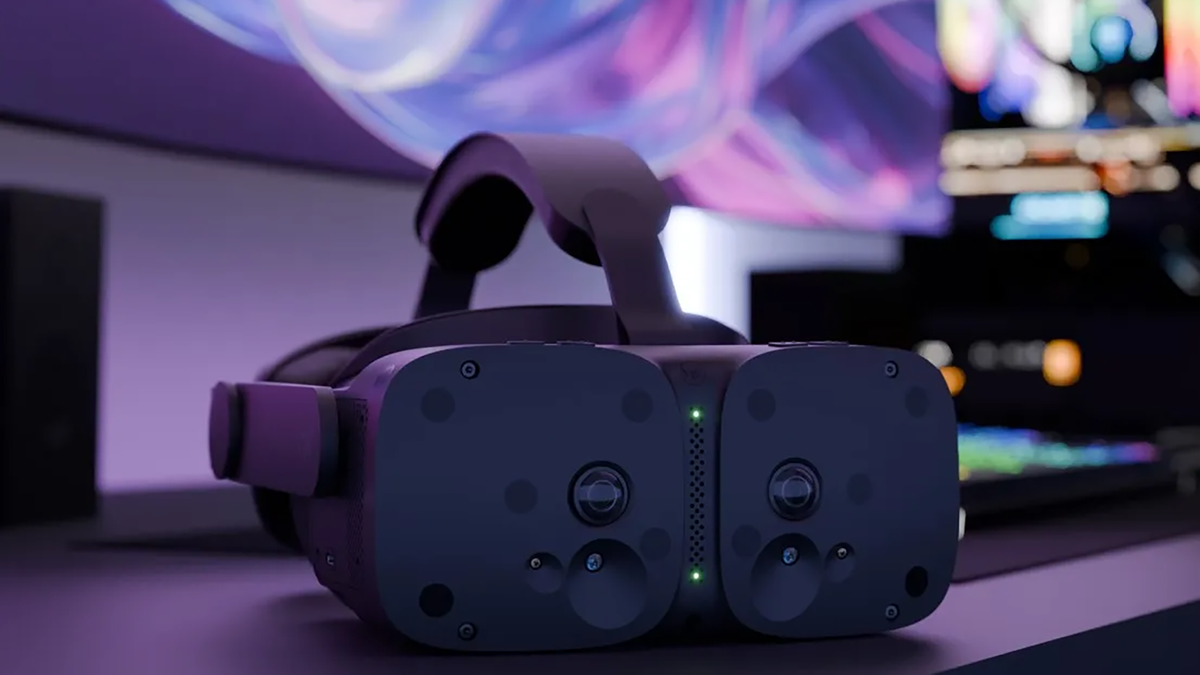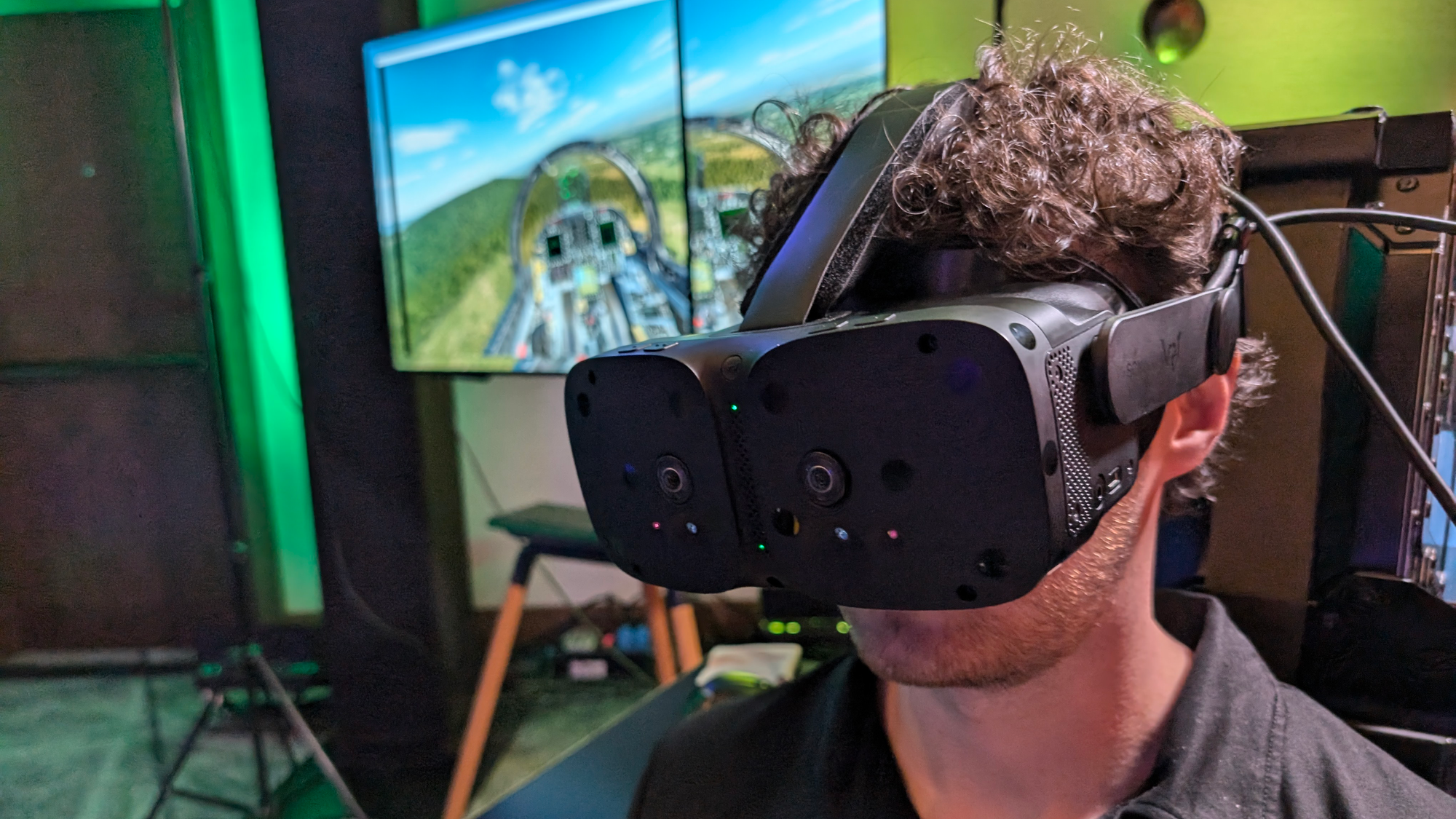Somnium VR1 promises to be the headset of choice for PC VR enthusiasts with money to spend. But does it deliver? I recently went hands-on to find out.
If you’re interested in reading about the specs and details of Somnium VR1, please see my earlier article on the headset’s preorders opening. This article deals with my initial impressions of the experience those specs create.

I was invited to try Somnium VR1 by Artur Sychov, the founder & CEO of Somnium Space, and the company paid for my flights and stay from the UK to Prague and back. If you’ve read my work before you’ll know that won’t have any effect on my impressions, but I think it’s important to disclose nonetheless.
The main reason I’m describing this piece as “first impressions” rather than a regular hands-on is because, frankly, I didn’t really get much time with Somnium VR1. Somnium Connect was a 12-hour event, but less than two hours of that time was allocated for demos, around one near the beginning and one at the end, and these were the same in which lunch was served. Combined with the fact that there were four demo headsets between one hundred queuing attendees, each person really only got around 10 or 20 minutes with the headset.
The rest of the time was dedicated to talks from big names in the European XR industry, during which VR1 demos were unavailable. Don’t get me wrong, these talks from people like Lynx founder Stan Larroque and Ultraleap’s Emily Savage were interesting and engaging, I and the other attendees couldn’t help but wish we’d had a little more time with the hardware.
For some headsets it’s possible to come to an informed position after 10-20 minutes, but Somnium VR1 is a highly configurable device with a PC tool that offers a wide range of settings that can dramatically affect the experience, as I’ll detail below.
Somnium VR1: First Impressions
What I immediately noticed when putting Somnium VR1 on was it indeed delivers the widest undistorted field of view of any consumer headset to date, noticeably wider than Meta Quest 3 and Valve Index.
No, it wasn’t the feeling of complete immersion that I got when I tried the $10,000 XTAL 3, which delivers 180° horizontal field of view, but Somnium VR1 is still a noticeable step up in immersion for a fraction of the price. I noticed mild geometric warping at the periphery, but only at the very edge of the lenses, nowhere near to the extent you’d see in an old Pimax headset.
However, my excitement was quickly dampened by a strange issue I haven’t seen in a VR headset for many years now. When looking at certain areas of the lens, I found my eyes were unable to focus, and started to converge to produce what I can only describe as a bizarre “cross-eyed” feeling, no matter where I had the IPD slider set to and even if I dialed it in to my exact IPD. At first I thought this was a defect with one of the demo headsets, but that was quickly ruled out when I experienced it in a second headset too.
Most others in attendance didn’t report having this issue, but XR enthusiast Brad Lynch says he experienced it too. When I brought this up to Sychov, he was initially puzzled. But then he took me into a further demo and started playing with multiple of the configurable lens distortion matrix settings in the Somnium PC software tool. This successfully reduced the severity of the issue. While there simply wasn’t enough time to dial in the perfect settings for my eyes, I could easily imagine that with enough time I could eventually find them.
When I could focus properly though, or if I closed one eye beforehand, the image quality was excellent. It felt similar to Varjo Aero, but with superior contrast, slightly better colors, and crucially much improved brightness. Given how much I use Apple Vision Pro and Meta Quest headsets these days, I was taken aback by just how bright Somnium VR1 can get.
In terms of comfort, VR1 felt surprisingly good for a headset with a total weight of 850 grams. That’s likely thanks to it rather uniquely having a hinge halfway along the side straps, allowing you to pivot the meaty back padding to exactly where you want it on the back of your head while independently positioning the visor itself to align the lenses to your eyes. However, the comfort of headsets is best measured in sessions of hours, not minutes, so don’t draw any serious conclusions from this.
0:00
Footage of me using Somnium VR filmed by YouTuber Tyriel Wood.
And an unexpected star of the show was Somnium VR1’s passthrough. While it wasn’t depth-correct, the passthrough image quality was better than any other headset I’ve tried, including Apple Vision Pro and Varjo XR-4. This is seemingly thanks to the use of much larger sensors than the tiny little ones used in other headsets, bringing in more light and avoiding graininess, as well as impressively well tuned sharpening and denoising algorithms.
Another impressive aspect of VR1’s passthrough is that Somnium’s software lets you mask out only specific areas, which in this demo was used to show the real flight simulation cockpit and controls, as well as of course your hands and arms, while outside the cockpit remained fully virtual.
What’s missing from Somnium VR1 compared to headsets like Valve Index and Bigscreen Beyond with Audio Strap is integrated audio. You’ll need to add your own headphones here, though it’s possible we’ll see community audio addons thanks to VR1 having modular anchor points on each side and the bottom.
Somnium VR1: Conclusions
Somnium VR1 starts at €1900, but you’ll probably want eye tracking for foveated rendering, bringing it up to €2500, and if you have an impressive cockpit you want to mask in with passthrough too, the ultimate edition hits an eye-watering €3500. And, of course, this doesn’t include the required SteamVR Tracking base stations.
Given the pricing, this clearly isn’t the next mainstream VR headset or even the next Valve Index. But it could be the ideal headset for relatively wealthy flight simulator and racing simulator enthusiasts who are already used to spending thousands to get the ideal setup. A native DisplayPort image delivered to a truly wide field of view with nearly 3K resolution and eye tracking isn’t something you can currently get from any other company, at any price.
However, the experience of VR1’s lenses seems to vary considerably from person to person, far more than with most other headsets, and it’s unclear to what degree dialing in the configuration can solve issues you might experience. That makes VR1 a very difficult headset to recommend. Somnium plans to organize community meetups throughout both Europe and the US to let prospective buyers try the headset on, so if you’re on the fence I’d advise attending one of these meetups to see how well VR1 is suited to your own eyes, not mine.






